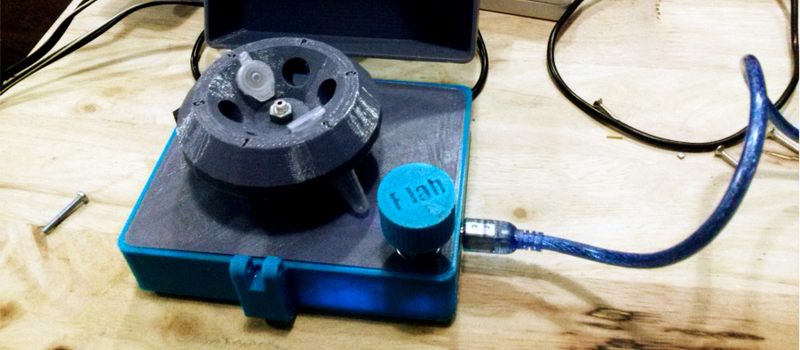[F.Lab] is really worried that we are going to prepare a DNA sample from saliva, dish soap, and rubbing alcohol in their 3D-printed centrifuge and then drink it like a shot. Perhaps they have learned from an horrific experience, perhaps biologists have different dietary requirements. Either way, their centrifuge is really cool. Just don’t drink the result. (Ed note: it’s the rubbing alcohol.)
The centrifuge was designed in Sketch-Up and then 3D printed. They note to take extra care to get high quality 3D prints so that the rotor isn’t out of balance. To get the high speeds needed for the extraction, they use a brushless motor from a quadcopter. This is combined with an Arduino and an ESC. There are full assembly instructions on Thingiverse.
[F.Lab] has some other DIY lab equipment designs, such as this magnetic stirrer. Which we assume you could use to make a shot if you wanted to. However, it’s probably not a good idea to mix lab supplies and food surfaces. Video after the break.

















Sketchup and perfect circles don’t go together by default.
By défaut no…but increasing the amount of vertice is not that hard either…
You don’t need perfect circles, just for it to be symmetric.
Although their design is apparently inherently balanced it would still benefit from actual balancing. The process is not as complex as people seem to think. Static balancing is well understood and simple to do. Dynamic balancing is less so but can still be done in house in most decently equipped hackspaces. Maybe a more user friendly dynamic balancing rig would be a good Hackaday prize project.
3d-printed and centrifuge is not a combination of words I want to see on the same product. Even if it’s perfectly balanced, do they know what the burst-RPM of the rotor is?
They’ll find out, one of these days.
Why is my first thought, when I see this… That looks like a painful suicide machine”. All well and good until the print explodes like a cd on an angle grinder.
Maybe an acetone vapour bath might smooth things and increase the durability. I know it has a cover but I’m still not sure I’d want to be in the same room for the first few test runs.
Reading the comments makes me think…
perhaps we need another kind of 3D printer for “round” (and round-ish) things? Polar instead of Cartesian?
As any potter can attest, polar 3D printers are in fashion since times immemorial :-)
You mean like this: http://polar3d.com/ ?
Feed it actual arcs (as in not the default SketchUp export “arc like line segments that look more like a stop sign than a circle”), get more circular outputs. But only to a point as printing with point based extruders is still inherently limited, print quality wise.
What does that “Flah” button do? Mine say “TLAH”.
As an educated guess, it just could be “F.Lab”, the name of the hackspace and the first word in the article.